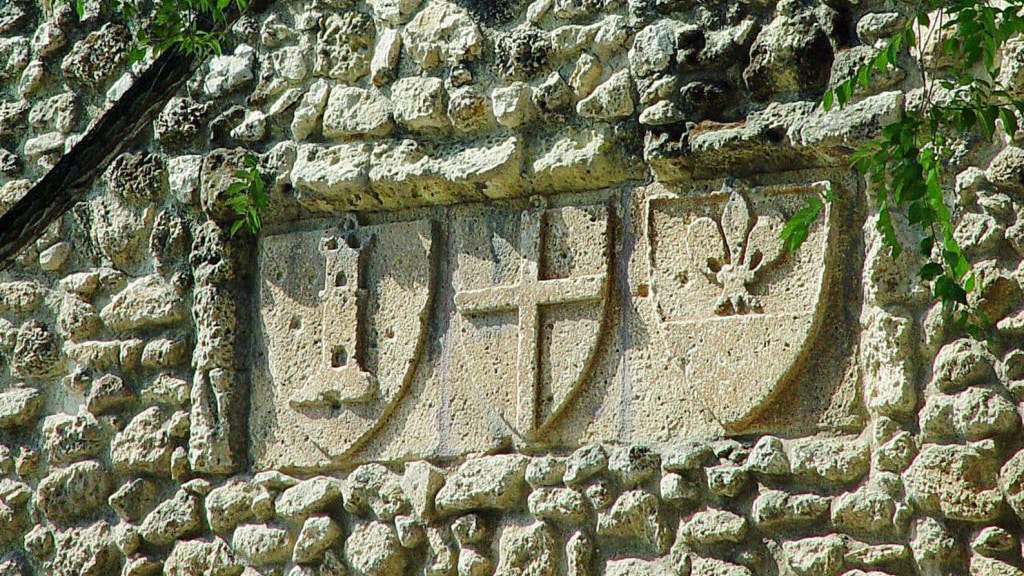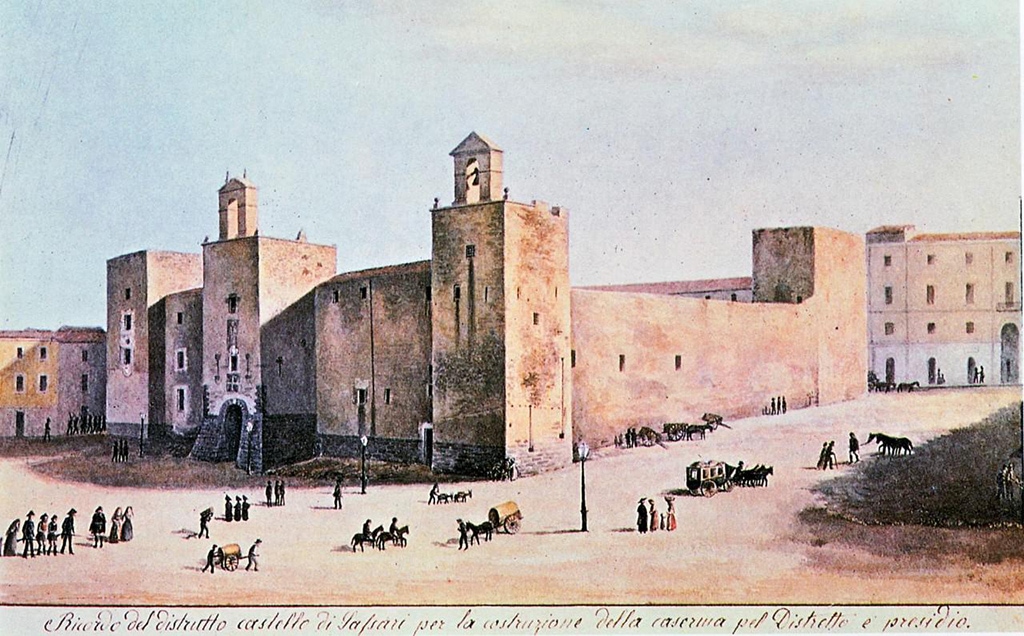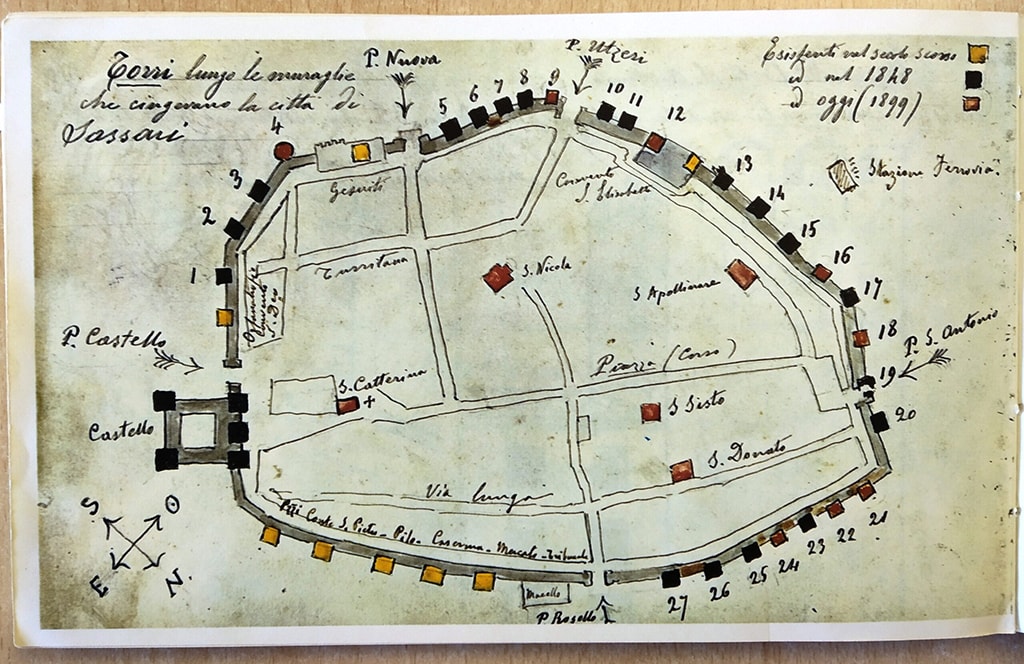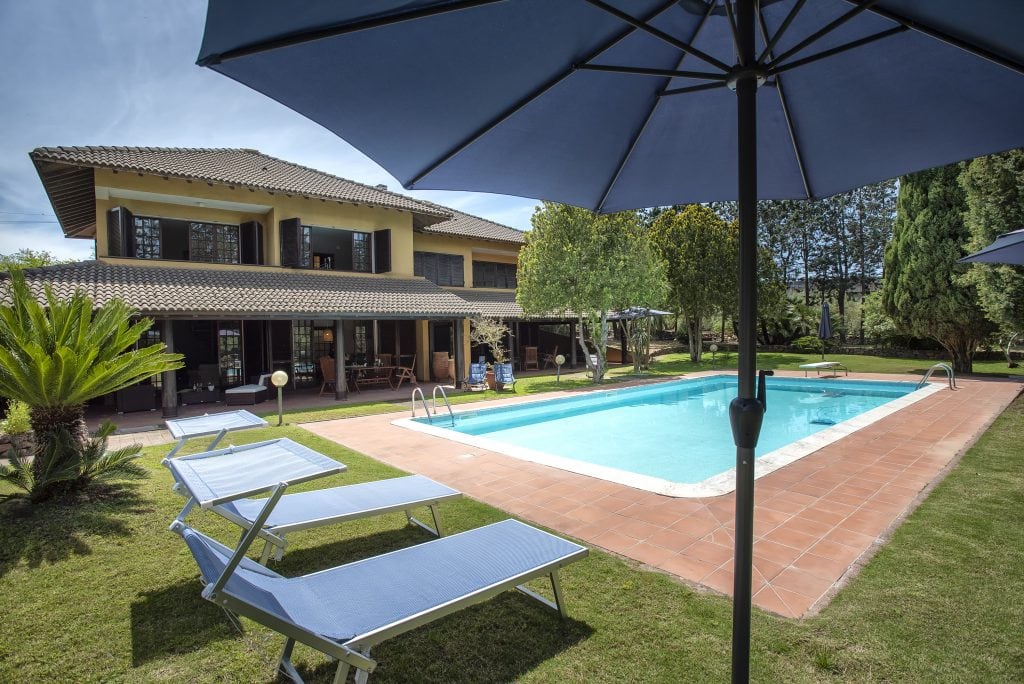The walls of Sassari: discover their history and where to see them

The walls of Sassari, with their ancient towers, hide among the city’s buildings revealing an immense
history. Read in this article where to find them, how to visit the towers and everything you need to know
about these ancient constructions!
The history of the walls of Sassari
This is a story that begins in the Middle Ages and tells of all the dominations that have left their mark on
the city.
The first stones were laid by the Pisans in the 13th century to defend the city, then the walls were
continued by the Genoese and later modified by the Aragonese.

But the alterations did not stop. The shape of the walls continued to undergo changes, also due to
repeated demolition works that, however, never definitively erased their traces.
This long process continued until 1880 when, along with the walls, the old Aragonese castle was also
demolished.
So today you can only see a few remains of the fortifications, but when they were completed in the
Middle Ages, they perfectly surrounded the entire town. The imposing walls included four gates and no
less than 36 defence and watchtowers.
Some of these towers have escaped destruction, would you like to know if it is
possible to visit them?
Read the next paragraph.
The towers of Sassari’s walls
Of the immense crenellated towers that once stood for the defence of the citadel, six now remain.

Walking around the city, one can admire them in their grandeur and it is striking that of all the square
towers, there is only one that is circular.
Not all of them can be visited, except in special circumstances. This is also due to the fact that some of
them are now used as civilian housing.
Yes, there are people who are lucky enough to live in the city’s ancient towers.
Here are the ones not to be missed during your tour in Sassari:
Torretonda or Turondola
Just as the name suggests, this is the famous and only tower, among those that remain, to have a round
base. What is left of the imposing structure also gives its name to the town street, which is called Via
Torre Tonda (Round Tower Street).
n the 13th century, the tower was part of the northern sector of the city walls.
What remains of the two-storey structure is 2/3 of its original circumference. Today it is partly covered by
an uninhabited building from the 19th century.
You can observe it while walking down the street, but it is also possible to visit it during monument days.
If you happen by, we highly recommend you take a tour of it.
Tower of Porta Sant’Antonio
It is located in the square of the same name, which is dedicated to the Saint. During the Middle Ages,
when the walls were intact showing all their splendour, the tower was placed in a position adjacent to the
gate of Sant’Antonio.
From its highest point, between the stone battlements, one could keep an eye on a vast territory in the
direction of the Gulf of Asinara: nothing escaped the control of the guards who garrisoned the city.
Today it is not possible to visit the imposing building inside, but at the base of the structure the public
baths used during the market can still be seen.
Towers of Corso Trinità
There are no less than two towers on Corso Trinità, both square and without battlements.
Remember when we said that there are people who are lucky enough to live inside them?
The one on Corso Trinità, which corners Via delle Muraglie, is still inhabited today!
The two towers are also special because they are connected to the longest remaining stretch of the city
walls.
Although, to be precise, there is a difference in height between the Corso della SS Trinità and Via della
Muraglie that has been bridged with steps.
The gates within the walls of Sassari
In the beginning, four gates were opened in the imposing stone walls, to which was later added the
“Porta Nuova” for a total of five entrances:
Porta Mercato
Porta Mercato has two other names: Macello or also Rosello. The last name comes from the fact that it is
located opposite the famous Rosello fountain and the Church of the Holy Trinity. One of the joints
remains of this gate.
Located to the north-east, in ancient times it was passed through by wayfarers and merchants on their
way to the territory of Romangia.
Porta Castello
This was the gate built on the south side of the city walls. It is so called because it stood right in front of
the old medieval castle.
Porta Utzeri
Porta Utzeri was one of the first four to be opened. It was situated along the western line of the walls.
The trace that remains of it today is a widening bearing the same name.
Porta Sant’Antonio
This gate provided access from the north-west. It was fundamental to the life of the city because it gave
access to its famous cultivated fields and above all to the ancient Porto Torres, which at the time was
called Turris Libissoni.
Porta Nuova
The last of the five gates to be built was “Porta Nuova”, on the north-west side. It was located adjacent to
the round tower, the University and the city’s archbishopric.
What is left of those gates today?
Only one hinge of Porta Mercato, also known as Porta Rosello.
All five gates were in fact demolished in the second half of the 19th century.
How to visit the walls of Sassari
To see the remains of the walls of Sassari, including the towers and the traces left by the gates, all you
have to do is walk around the city and enjoy the spectacle for free.
While most of the towers are inaccessible, it is still possible to visit some of them during monument days.
But above all, for a crazy tour of Sassari and a dream holiday, we recommend a nice stay in a quiet area,
where you can enjoy privacy and serenity but at the same time stay close to the centre, so you don’t miss anything of this great city!

